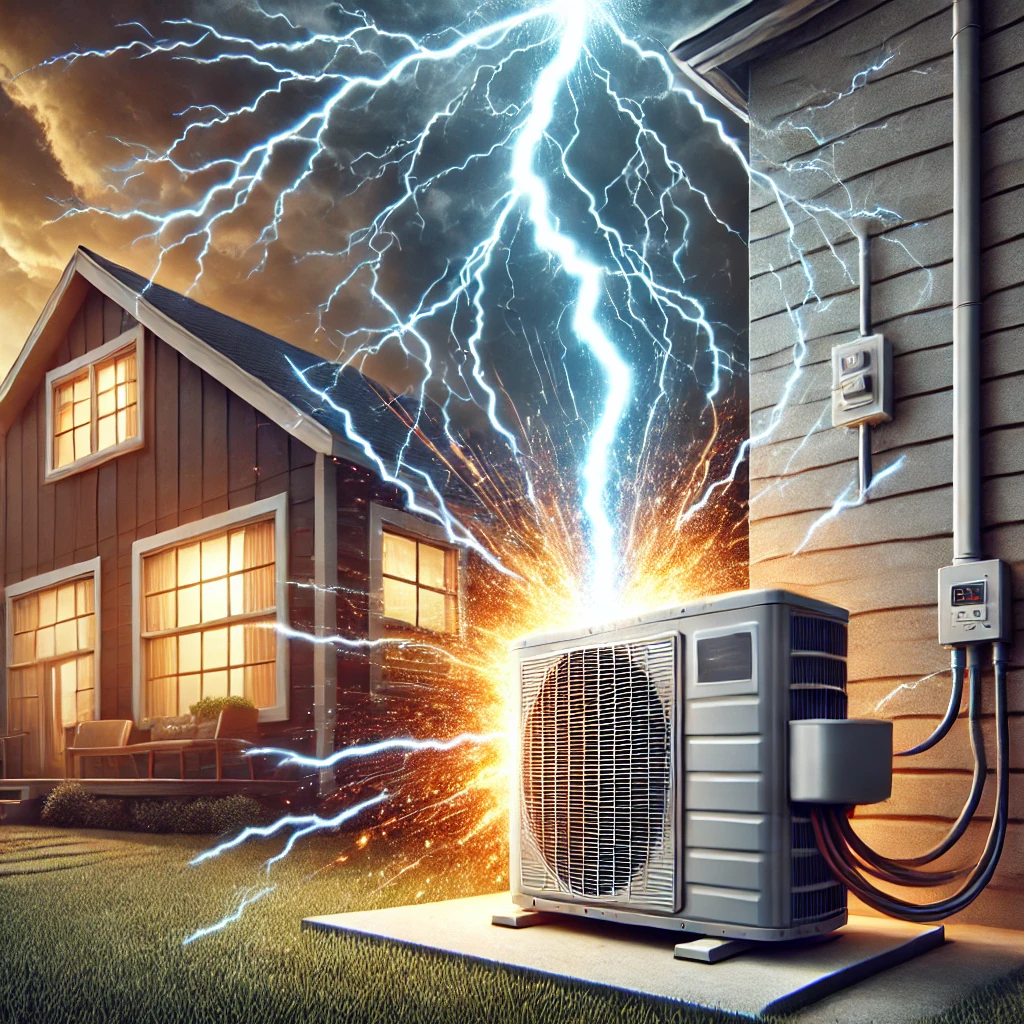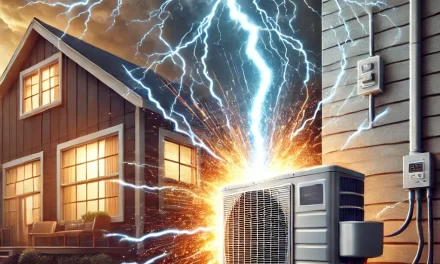Last updated on March 4th, 2025 at 02:35 pm
Everything in your home gets older and requires maintenance. Some people are handy, they can paint and fix things. Others have no skills and fear what will happen if the HVAC system goes out. One solution for people who worry about affording the repair of their washing machine or stove is to buy a home warranty. Our 12 reasons why you should buy a home warranty are contrasted in this article with 12 reasons why you may not need one.
Review the facts before you decide to buy a home warranty plan. Deciding to buy a plan with a home warranty company is just the start of the process. No two service contracts are the same. Just as you want to push responsibility for older applicants to the home warranty provider, that service provider wants to limit their exposure as well.
Let’s help you decide if you need a home warranty plan
The following information has been included to help you decide if you need a home warranty plan and if you do, what type of plan you need. In addition, you need to select a good provider with a record of not ripping off their clients.

I have included in this article lots of details about the entire home warranty concept, from the 12 reasons why you may want to consider purchasing a home warranty to how to go through the process of buying one that works for you. Check our table of contents. Remember, even a new house may have items that fail. You may not think you need specific appliances covered because they are new but they do get old.
If you are a home buyer, it’s a good idea to ask your real estate agent to consider adding an extended warranty to your contract. Most home builders offer a home warranty plan. It is not unusual for a buyer of older homes to ask for the seller to include a service contract as part of the deal. If one is included be sure it covers all of the major appliances including AC.
Should You Buy a Home Warranty?
12 Reasons to Buy a Home Warranty
- Protection for older systems and appliances, reducing repair costs.
- Helps with budgeting by providing fixed repair and replacement costs.
- Offers peace of mind for unexpected breakdowns and repairs.
- Ideal for first-time homeowners unfamiliar with maintenance costs.
- Simplifies repairs by coordinating contractors and services.
- Covers costly repairs for major systems like HVAC and plumbing.
- Increases home value and appeal when selling with a transferable warranty.
- Allows for optional add-ons like pools, spas, and septic systems.
- Great for those who prefer not to handle DIY maintenance.
- Reduces financial stress by ensuring support for sudden repairs.
- Potential savings on high-cost items, especially for older homes.
- Many plans offer flexible co-payment options to suit different budgets.
12 Reasons Not to Buy a Home Warranty
- Limited coverage, often with exclusions for certain appliances and systems.
- High service fees for each service call can add up quickly.
- Claims can be delayed or denied due to contract stipulations.
- Low payout caps may not cover the entire cost of repairs or replacements.
- Restricted to the company’s network of contractors, limiting choice.
- Quality of service can vary among the assigned contractors.
- Not cost-effective for newer homes with reliable appliances.
- Annual premiums may exceed the repair costs for covered items.
- Pre-existing condition exclusions may disqualify certain repairs.
- Complex contracts with fine print can be hard to understand.
- Additional costs for non-covered items or repeat visits.
- Not all repairs may be immediate, with wait times for service visits.
A home warranty can be a good investment
A home warranty can be a good investment for homeowners who want an extra layer of financial security, particularly those with older systems, limited savings for repairs, or a desire to simplify the repair process. Carefully reviewing different warranty plans and understanding the terms and coverage details will help ensure that the plan you choose meets your specific needs and expectations.

The cost of a home warranty
Your next decision is you choose to purchase a home warranty contract is to determine the cost. The following provides information to give you an estimate of what a home warranty cost may be.
Home warranties are priced based on several factors, which contribute to the overall annual or monthly premium you pay. Here’s a breakdown of how these prices are typically structured:
1. Type of Coverage
- Basic Plans: Cover essential appliances or systems (e.g., HVAC, plumbing, electrical). These plans are less expensive, generally costing around $300 to $600 per year.
- Comprehensive Plans: Include coverage for a broader range of items, such as washers, dryers, pools, and specialty systems. These can range from $600 to $1,000 or more per year.
2. Geographical Location
- The cost can vary based on where you live. Areas with higher labor or parts costs may have higher home warranty premiums.
- Regions prone to extreme weather may influence the pricing due to a higher likelihood of system failures.
3. Size and Type of Property
- Single-family homes generally have a standard rate, but larger properties (e.g., multi-family homes or large estates) may incur higher premiums.
- Condos and townhouses may have different pricing structures, often lower than standalone homes.
4. Add-On Coverage
- Homeowners can add specific items or systems to their coverage, such as pools, septic systems, or well pumps. These add-ons can increase the overall cost by $25 to $100 per item per year.
- Some plans offer optional coverage for high-end appliances or specialized equipment.
5. Service Fee Amount
- The service fee (or co-payment) impacts the premium. Plans with lower service fees typically have higher premiums, and vice versa.
- For instance, choosing a plan with a $75 service fee may cost more in annual premiums than a plan with a $125 service fee.
6. Company and Plan Features
- Reputation and Service: Companies known for better customer service or higher claim approval rates may charge more.
- Special Benefits: Plans that offer extra benefits, like a free annual inspection or discounts on non-covered repairs, might be priced higher.
7. Promotions and Discounts
- Companies often offer promotions for first-time customers, such as discounted first-year pricing, waived service fees, or bonus coverage periods.
Price Ranges
- Basic Coverage: $300 to $600 per year.
- Mid-Tier Coverage: $500 to $800 per year.
- Premium or Comprehensive Coverage: $800 to $1,200 or more per year.
- Monthly Premiums: Typically range from $25 to $100 per month, depending on the plan and options chosen.
Considerations When Pricing Home Warranties
- Evaluate Needs: Only include coverage that fits your needs to avoid unnecessary costs.
- Service Fees vs. Premiums: Choose a balance between a manageable service fee and an affordable premium.
- Get Multiple Quotes: Comparing quotes from several providers can help you find the best value for your specific requirements.
Understanding these factors helps in selecting a plan that balances cost and the level of coverage, ensuring it fits your budget and provides the necessary protection.
Following the decision matrix, it’s now time to understand the home warranty policy and its provider. Most states regulate home warranty sellers. You need to fully understand the information provided below before my make a decision on a home warranty coverage provider.

How are home warranty companies regulated?
1. State-Level Oversight
- Department of Insurance: In many states, home warranty companies are regulated by the state’s Department of Insurance or a similar agency. These agencies oversee licensing, compliance, and consumer protection to ensure that companies operate fairly and transparently.
- Licensing Requirements: Some states require home warranty companies to obtain a special license or registration before they can offer services. This ensures that they meet certain financial stability and operational standards.
2. Consumer Protection Laws
- Disclosures and Contract Clarity: Regulations often require home warranty providers to disclose contract terms clearly, including coverage, exclusions, and the claims process. This helps prevent misleading or deceptive practices.
- Claims Process Regulations: States may set rules for how claims must be processed, including response times and dispute resolution protocols.
- Cancellation and Refund Policies: States may also mandate clear cancellation policies and specify whether consumers are entitled to refunds if they cancel a warranty.
3. State-Specific Regulations
- Varied Regulation Levels: Some states, such as California, have strict regulations for home warranty companies and closely monitor their activities. In California, for example, home warranty providers are regulated by the California Department of Insurance, which sets standards for licensing, financial practices, and consumer complaints.
- Less Regulated States: Other states may have minimal oversight or no specific regulations for home warranty companies. In these cases, general consumer protection laws may apply, but there might not be dedicated regulatory bodies for home warranties.
4. Financial and Operational Requirements
- Financial Reserves: Some states require home warranty companies to maintain a certain level of financial reserves to ensure they can pay claims.
- Annual Reporting: Companies may need to submit annual reports to prove ongoing compliance with state regulations, demonstrating financial solvency and adherence to consumer protection standards.
5. Consumer Complaint Process
- Regulatory Complaints: Consumers can file complaints with their state’s Department of Insurance or other oversight bodies if they experience issues with a home warranty company. This adds a layer of consumer protection and oversight.
- Dispute Resolution: States may mandate that home warranty companies have clear dispute resolution processes for handling claims or coverage disputes.
6. Interstate Variability
- Differing Standards: The standards and strictness of regulations can differ widely. Some states have comprehensive rules and actively monitor companies, while others may rely on broader business and consumer protection laws.
How to Check a Company’s Regulatory Status
- Contact the State Department of Insurance: You can verify whether a specific home warranty company is licensed or registered in your state.
- Look for Company Reviews and Compliance Records: Check if there have been any regulatory actions or significant consumer complaints against a company.
- Read the Terms and Conditions: Ensure that the warranty terms align with state laws regarding consumer rights and protections.
Conclusion
While most states do regulate home warranty companies to some extent, the level of oversight can range from comprehensive to minimal. It’s important to check how home warranty companies are regulated in your specific state and to choose a company that complies with local regulations and consumer protection laws.
Assuming that you are ready to order a service contract, you need to read and follow the items listed below to help you fully understand what you are buying and how it works:
The Process of Buying a Home Warranty
1. Decide If You Need a Home Warranty
Evaluate the age and condition of your appliances and systems, as well as your budget for potential repair costs. If unexpected breakdowns could significantly impact your finances, a home warranty might be beneficial.
2. Determine What You Want It to Cover
Make a list of essential systems and appliances you need covered, such as HVAC, plumbing, electrical systems, and kitchen appliances. Consider optional add-ons for specialty items like pools or spas if necessary.
3. Search for a Home Warranty Provider
Research providers by comparing coverage options, costs, and customer reviews. Gather recommendations from friends, family, or online consumer review sites.
4. Check the Provider’s Reputation
Verify the provider’s reputation by checking the Better Business Bureau (BBB) and state insurance department for complaints or regulatory issues.
5. Decide on Your Risk Tolerance
Determine if you prefer a plan with a higher co-payment and lower premium or a plan with a lower co-payment and higher premium. Balance these choices according to your budget and comfort level.
6. Review the Contract Thoroughly
Read the entire contract carefully to ensure you understand what is covered and what is excluded. Make sure all the items you need are listed, and look for any hidden limitations or exceptions.
7. Understand the Claim Process
Make sure you are familiar with the process of filing a claim, how quickly a technician will be sent, and any requirements for submitting documentation or maintenance records.
8. Evaluate the Network of Service Providers
Check if the company allows you to choose your own service providers or if you must use their network. Make sure their network is reliable and has a good reputation for quality service.
9. Confirm Additional Costs
Verify if there are any hidden fees or additional costs for services such as non-covered repairs, re-inspections, or repeat visits.
10. Clarify Waiting Periods
Understand any waiting periods before coverage takes effect. This is typically around 30 days, so plan accordingly if you need immediate coverage.
11. Check for Renewal Terms and Rate Increases
Find out how renewals are handled, if rates are likely to increase after the first year, and any terms for automatic renewals.
12. Sign Up
Once satisfied, sign the contract and keep a copy for your records. Set up payment options for your chosen plan.
13. Store Important Contact Information
Keep the contact details of your home warranty provider easily accessible for emergencies, and save both digital and physical copies of your contract.
By following this comprehensive guide, you can confidently choose the best home warranty for your needs and ensure that you’re fully informed before committing to a plan.
Your selected home warranty provider will need some information from you to create a home warranty plan. The following are typical items of information you may be required to provide when you order your policy.
Get your solar system covered if your home insurance is not adequate
The best way to accomplish the task of ordering your plan is to write down the information below. Start with the age of your home and HVAC system (air conditioner). These are key items to insure.
Home warranty companies collect information
Home warranty companies typically collect a variety of information to assess coverage, determine premiums, and process claims effectively. Here’s what they generally collect:
1. Property Information
- Address: The complete address of the property for service and verification purposes.
- Type of Property: Whether it is a single-family home, condo, townhouse, or multi-unit property.
- Square Footage: Sometimes collected to help determine the scope of coverage needed.
2. Homeowner Details
- Name and Contact Information: To maintain records and communicate effectively.
- Homeownership Status: Proof that you own the property or are authorized to request a warranty for it.
- Previous Warranty Information: If applicable, details on prior coverage to understand any prior claims or services.
3. Appliance and System Information
- Age of Appliances and Systems: To gauge the likelihood of future breakdowns. While most home warranty companies don’t require inspections or detailed information upfront, age may influence claim approvals.
- Brands and Models: To understand the type of equipment covered and estimate potential repair or replacement costs.
- Condition of Appliances: Some companies may ask for confirmation that systems and appliances are in working order at the time of coverage.
- Installation Date: If known, this can help with verification during claims.
4. Specific System Details
- HVAC and Plumbing Systems: Detailed information on major systems, especially if they’re high-value items in the warranty.
- Specialized Equipment: Information on items like pools, hot tubs, or septic systems, if included in the coverage.
5. Coverage Preferences
- List of Items to be Covered: Choices about which systems and appliances the homeowner wants under warranty, including optional add-ons.
- Service Fee Selection: The preferred co-payment for service visits (e.g., $75, $100, $150), which may affect the overall cost.
6. Previous Claims History
- Claims with Previous Warranties: Information regarding past claims can be relevant for underwriting or claims processing.
7. Payment and Financial Information
- Billing Details: Credit card or bank account information for setting up automatic payments.
- Payment History: For managing subscriptions and potential discounts or promotions.
8. Home Inspection Reports (Optional)
- While not always required, some companies might ask for a home inspection report to confirm the condition of appliances and systems, especially for older homes.
Why These Details Are Collected
- Risk Assessment: To help the company determine the risk level and whether any exclusions or higher premiums should be applied.
- Efficient Claims Processing: To speed up the claim process by having pre-collected details.
- Coverage Customization: To allow tailored coverage options based on the unique needs of the homeowner.
Privacy Considerations
Home warranty companies generally ensure that personal and property information is kept private and secure, following data protection regulations. It’s a good idea to review the company’s privacy policy to understand how your information will be used and stored.
Use the checklist below to determine in advance of speaking with a home warranty representative what items you would like to cover. Print your screen and use the list during the conversation to be sure you do not leave anything out.
Comprehensive Home Warranty Checklist
Learn to fix things
Consider learning how to do routine maintenance around your own home. The following courses may be offered at your community college:
Many community colleges offer handyman or DIY (do-it-yourself) courses as part of their continuing education or adult learning programs. These courses may include a variety of topics related to home maintenance, repair, and improvement. Common course offerings might include:
- Basic Home Repairs and Maintenance: Covering skills like fixing leaky faucets, patching drywall, and basic plumbing or electrical work.
- Carpentry and Woodworking: Teaching fundamental carpentry skills for projects like building shelves, repairing furniture, or constructing small structures.
- Plumbing Basics: Instruction on minor plumbing repairs, installation of fixtures, and troubleshooting common plumbing issues.
- Electrical Basics for Homeowners: Teaching safe practices for working with electrical systems, such as replacing light fixtures, outlets, or switches.
- Painting and Wall Treatments: Techniques for painting walls, applying wallpaper, and other decorative finishes.
- Tile Installation and Repair: Learning to lay floor and wall tiles, grouting, and replacing broken tiles.
- Landscaping and Gardening: Courses focused on outdoor projects such as planting, garden maintenance, and hardscaping.
- DIY Home Improvement Projects: General courses covering a variety of small projects to enhance home aesthetics and functionality.
These courses are often designed for beginners or intermediate-level participants and may be offered during evenings or weekends to accommodate working adults. Community colleges usually have affordable classes.

Home Warranty Providers
The list below provides a starting point for some of the largest home warranty companies in the United States. This list is not an endorsement nor is RetireCoast being paid by any.
Here are five reputable home warranty companies, along with their official websites:
- Liberty Home Guard
- Overview: Recognized for comprehensive coverage options and high customer satisfaction.
- Website: https://www.libertyhomeguard.com
- American Home Shield
- Overview: One of the largest and most established home warranty providers, known for flexible plans.
- Website: https://www.ahs.com
- First American Home Warranty
- Overview: Offers affordable plans with generous coverage limits, especially for home systems.
- Website: https://homewarranty.firstam.com
- Cinch Home Services
- Overview: Known for comprehensive coverage and a long workmanship guarantee.
- Website: https://www.cinchhomeservices.com
- AFC Home Club
- Overview: Provides flexible plans with the option to choose your own service technician.
- Website: https://afchomeclub.com
When selecting a home warranty provider, it’s essential to review the specific terms, coverage options, and customer reviews to ensure the company aligns with your needs and expectations.
Should you decide not to buy a home warranty, consider opening a money market account to save money each month for eventual repairs of home items. Everything has a life. If you put away a portion of the replacement cost each month, you could effectively eliminate home warranty coverage for some items.
Comments
Please leave comments about this article. Thank you for taking the time to read it.
Discover more from RetireCoast.com
Subscribe to get the latest posts sent to your email.









